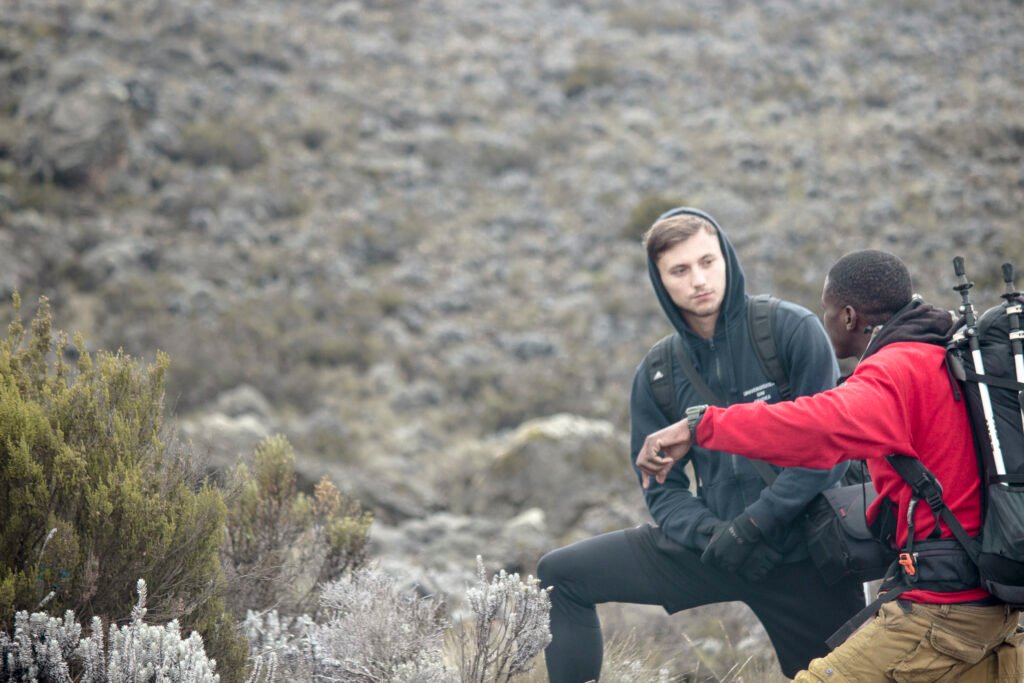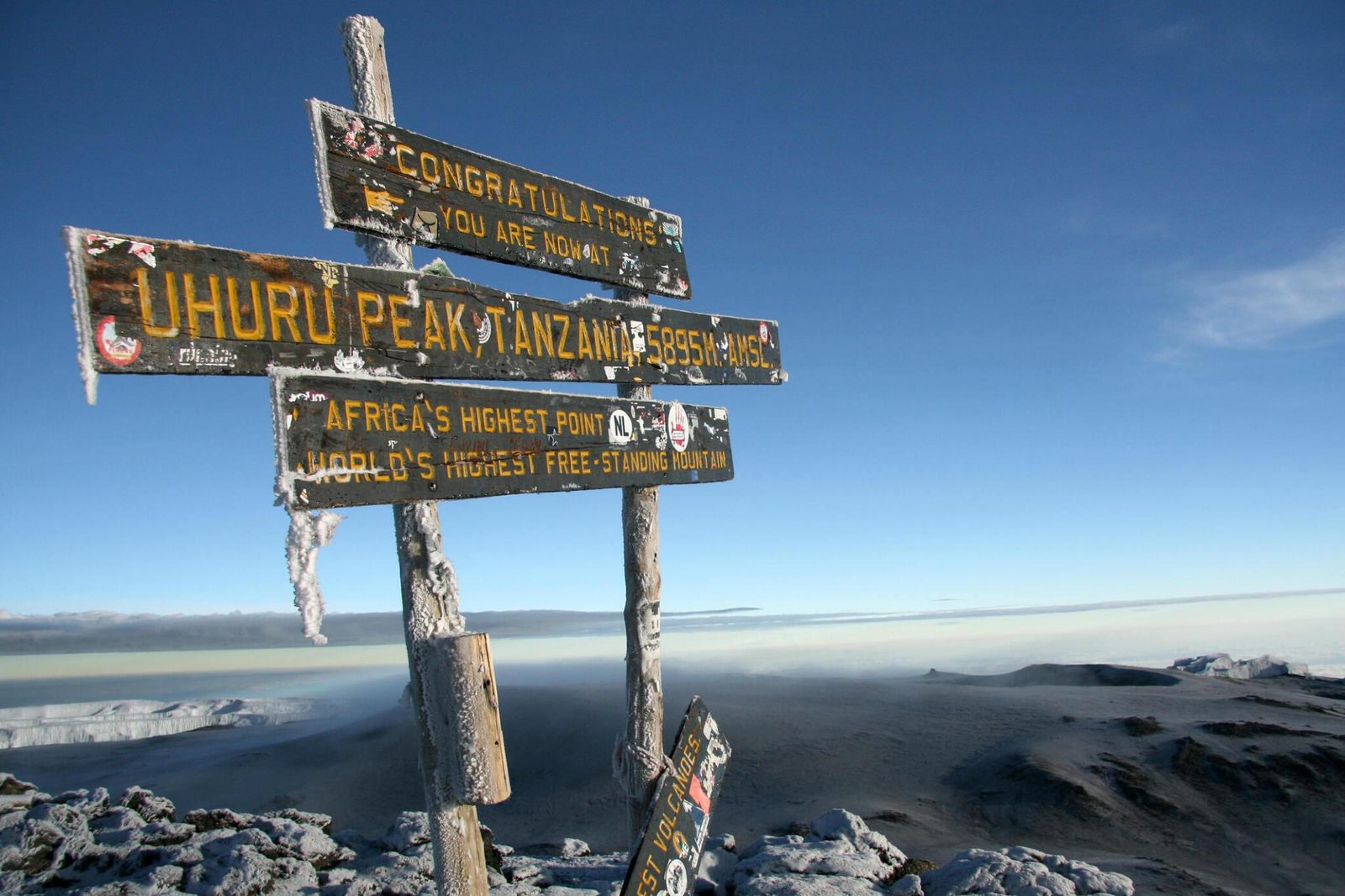Climbing Mount Kilimanjaro, the highest peak in Africa, is a thrilling adventure that attracts thousands of climbers each year. However, many people wonder: Is climbing Kilimanjaro dangerous? The short answer is that while Kilimanjaro is not a technical climb, it does come with risks, especially related to altitude sickness. With proper preparation, guidance, and safety measures, the risks can be minimized, allowing most climbers to enjoy a safe and successful ascent. Here’s what you need to know about the dangers of climbing Kilimanjaro and how to prepare for them.
Start planning your Kilimanjaro adventure.

1. Understanding the Risks of Altitude Sickness
One of the biggest dangers on Kilimanjaro is altitude sickness, which can occur when ascending to high altitudes too quickly. Kilimanjaro’s summit, Uhuru Peak, stands at 5,895 meters (19,341 feet), which puts climbers at risk for Acute Mountain Sickness (AMS). Symptoms of AMS include headaches, nausea, dizziness, and fatigue. In severe cases, altitude sickness can lead to more serious conditions such as High Altitude Pulmonary Edema (HAPE) or High Altitude Cerebral Edema (HACE).
- Prevention: The best way to avoid altitude sickness is to climb slowly and allow your body time to acclimatize.
Learn more about how to prevent altitude sickness.
2. Kilimanjaro Is a Non-Technical Climb
One of the reasons Kilimanjaro is accessible to many climbers is that it’s a non-technical climb, meaning you don’t need any special mountaineering equipment like ropes or ice axes. However, the climb still requires physical stamina and mental endurance, as it involves long days of trekking over varied terrain.
- What to Expect: Most routes on Kilimanjaro involve hiking rather than climbing, but the challenge comes from the altitude and the length of the trek.
Explore the best routes for climbing Kilimanjaro.
3. Weather Conditions Can Be Unpredictable
The weather on Kilimanjaro can change rapidly, especially as you ascend through the mountain’s five distinct ecological zones, ranging from tropical rainforests to arctic conditions near the summit. Temperatures can drop to well below freezing, and climbers can face strong winds, rain, or even snow at higher elevations.
- Preparation: Packing the right gear, such as thermal layers, a good-quality sleeping bag, and waterproof clothing, is essential to stay safe and warm on the mountain.
Check out the ultimate Kilimanjaro packing list.
4. The Importance of Acclimatization
Acclimatization is key to reducing the risk of altitude sickness on Kilimanjaro. The body needs time to adapt to lower oxygen levels as you ascend. Most successful summits occur on routes that allow for longer acclimatization periods, such as the Lemosho or Machame routes, which take 7-8 days.
- Climb High, Sleep Low: Following the principle of “climb high, sleep low” helps your body adjust to the altitude while resting at lower elevations.
Learn how acclimatization can improve your Kilimanjaro success rate.
5. Guided Climbs Are Essential for Safety
Choosing a reputable and experienced guide company is crucial to ensuring a safe Kilimanjaro climb. Licensed guides are trained to recognize signs of altitude sickness and are equipped with first aid knowledge, including oxygen tanks and portable altitude chambers in case of emergencies.
- Why Hire a Guide: A good guide will monitor your health throughout the climb, set an appropriate pace, and make decisions about whether it’s safe to continue to higher altitudes.
Find certified guides for Kilimanjaro climbs.
6. Physical Fitness Matters, But You Don’t Have to Be an Athlete
While you don’t need to be a professional athlete to climb Kilimanjaro, a good level of physical fitness is necessary. The trek involves long days of hiking, sometimes uphill for hours at a time. You should be comfortable walking for 5-7 hours a day on varying terrain.
- Training Tips: Focus on cardio exercises such as hiking, running, and cycling, as well as strength training for your legs and core. Training at high elevations or using a treadmill with an incline can also help prepare your body for the climb.
Learn how to train for Kilimanjaro.
7. Common Injuries and How to Prevent Them
While altitude sickness is the primary concern, climbers are also at risk of more common hiking injuries, such as blisters, sprained ankles, and knee pain. These can be easily prevented with the right preparation and gear.
- Tips to Avoid Injury: Wear properly fitted hiking boots, use trekking poles to reduce strain on your knees, and stretch regularly before and after each day’s hike.
Read about preventing hiking injuries on Kilimanjaro.
8. Staying Hydrated Is Essential
Dehydration can exacerbate the effects of altitude sickness, so it’s important to drink plenty of water during your Kilimanjaro climb. Most guides recommend drinking at least 3-4 liters of water per day to stay properly hydrated. Many climbers carry hydration packs for easy access to water while trekking.
- Hot Drinks: In addition to water, warm beverages like tea or hot chocolate are often provided during meal breaks to help keep your body warm and hydrated.
Discover more hydration tips for high-altitude trekking.
9. Mental Toughness Is Just as Important as Physical Strength
Reaching the summit of Kilimanjaro is a mental challenge as much as a physical one. The final push to the top, usually starting just after midnight, can be especially grueling. Cold temperatures, exhaustion, and the thin air can make it tempting to turn back.
- Staying Positive: Keeping a positive attitude, staying motivated, and focusing on small milestones can help you push through the toughest moments.
Find out how mental toughness can help you summit Kilimanjaro.
10. Descending Safely Is Just as Important as Reaching the Summit
Once you’ve reached the summit, the journey isn’t over. Descending Kilimanjaro is faster than the ascent, but it can still be challenging. Coming down too quickly can lead to altitude-related issues, so it’s important to take your time and descend safely.
- Knee Protection: Trekking poles are particularly helpful during the descent to reduce the impact on your knees and legs.
Learn how to descend safely after summiting Kilimanjaro.
Conclusion: Kilimanjaro Is Challenging but Achievable
So, is climbing Kilimanjaro dangerous? While there are risks, particularly related to altitude, the climb can be completed safely with the right preparation, a knowledgeable guide, and attention to your body’s signals. Thousands of climbers successfully reach the summit every year, and with the right approach, you can be one of them.
For expert guidance and personalized Kilimanjaro climbing packages, visit Kilimanjaro Climb Specialist or Eddy Tours & Safaris.

